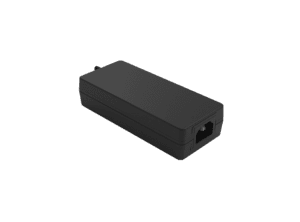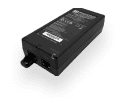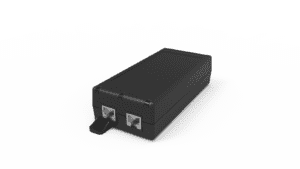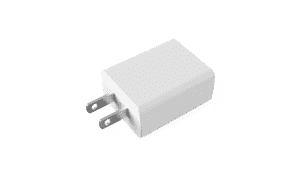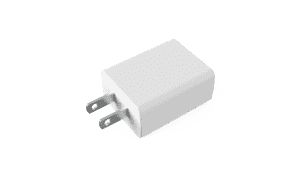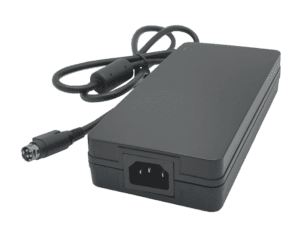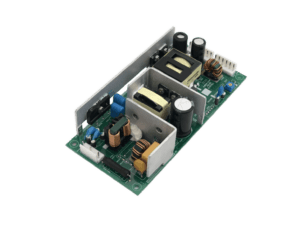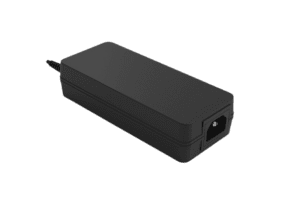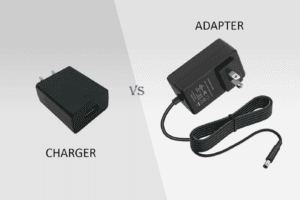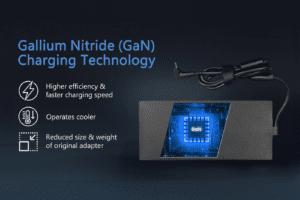BLOG
Why AI-Powered Fleet Management Platforms Are Integrating with Robotic Charging Stations for Predictive Maintenance and Auto-Docking
Table of contents

As fleets of autonomous delivery robots, cleaning bots, and mobile surveillance units scale across cities and campuses, traditional charging infrastructure is no longer enough. Today’s robotic operations require more than just power—they demand predictive insights, seamless coordination, and autonomous recovery. Enter the new standard: AI-powered fleet management platforms integrated with robotic charging stations.
This convergence allows robots to not only dock and recharge—but also communicate performance data, diagnose faults, optimize charging schedules, and even predict maintenance issues before failures occur. It’s a critical step toward creating a fully autonomous ecosystem that minimizes human intervention while maximizing fleet uptime.
In this article, we explore how the fusion of AI fleet software and smart charging stations is transforming the future of robotic operations—and what manufacturers, integrators, and cities need to know to stay ahead.
The Role of AI in Modern Robot Fleet Management
AI is revolutionizing fleet management by enabling real-time decision-making, predictive analytics, and autonomous coordination across large robotic deployments.
Top Features
- AI-driven routing and task allocation based on robot availability and battery levels
- Real-time performance tracking (battery health, motor temperature, usage patterns)
- Automated recharging schedules based on task completion and remaining runtime
- Historical data analysis to predict maintenance windows
Top Benefits
- Reduces downtime by proactively identifying potential failures
- Increases fleet utilization and energy efficiency
- Minimizes operational costs by automating fleet coordination
- Enables 24/7 autonomous operation with minimal human oversight
Best Practices
- Integrate AI platforms early in robotic system development
- Use fleet dashboards to visualize performance and charger load
- Leverage machine learning models trained on historical fleet data
- Implement dynamic charging rules that adjust based on time-of-day or grid load
AI transforms charging stations from static endpoints into intelligent, coordinated fleet hubs.
Why Charging Stations Must Now Be Smart and Connected
As robots grow smarter, their charging systems must evolve from passive power sources into active nodes in a connected ecosystem.
Top Features
- CANBus, RS-485, or Ethernet communication between dock and robot
- Wi-Fi or cellular connectivity to send data to the AI fleet platform
- Smart docking sensors for precise alignment and fault detection
- API integration for charge scheduling, health reports, and firmware updates
Top Benefits
- Allows robots to request charging based on real-time workload
- Provides fleet managers with live data on charging dock status and usage
- Enables automated fault alerts when a dock or robot fails to charge
- Synchronizes charging activity with fleet task allocation
Best Practices
- Choose docks with embedded communication modules
- Ensure charger firmware supports AI platform handshakes and command structures
- Design for OTA (Over-the-Air) updates to firmware and diagnostics
- Use standard data formats to ease integration with third-party platforms
The future of robotics depends on communication, coordination, and computation—charging stations must support all three.
How Predictive Maintenance Is Enabled Through Charging Station Integration
Charging stations are the ideal points to monitor robot health, as they connect directly to batteries, sensors, and firmware.
Top Features
- Health telemetry upload during charging cycles (battery cycles, error codes, wear indicators)
- Automatic logging of charge durations, anomalies, and docking misalignments
- AI analysis of trends in charging frequency, energy usage, and temperature
- Notifications for preventive service (e.g., battery replacement, alignment calibration)
Top Benefits
- Detects issues like motor degradation, overcharging, or misaligned connectors early
- Reduces costly emergency repairs with proactive maintenance scheduling
- Increases robot lifespan through optimized usage
- Minimizes fleet-wide disruptions by resolving issues before failure
Best Practices
- Equip chargers with sensors for voltage, current, and thermal logging
- Use AI platforms that compare current data to historical performance baselines
- Tag each dock with a unique ID to isolate location-specific trends
- Share diagnostics with field technicians through a centralized portal or app
Predictive maintenance is where AI and charging infrastructure converge to eliminate unexpected downtime.
CLIENT'S QUOTE
"Phihong’s PoE solutions have made a huge difference for us! Our network runs more efficiently, and we’ve seen real cost savings. We couldn’t be happier!"
Enabling Autonomous Docking Through AI and Sensor Fusion
AI platforms combined with smart docking stations allow robots to dock with precision, even in dynamic or crowded environments.
Top Features
- LIDAR, vision, or IR sensors embedded in docks for obstacle detection
- AI-assisted navigation and path prediction for precise approach
- Magnetic, QR, or beacon-based alignment for final docking accuracy
- Self-correcting firmware for reattempting failed dock attempts
Top Benefits
- Enables hands-free, reliable charging in public or cluttered spaces
- Reduces manual intervention for repositioning or resets
- Increases battery efficiency by ensuring complete charge cycles
- Enables night-time or off-peak charging without staff presence
Best Practices
- Calibrate robot and dock sensors for precision alignment
- Train AI models on docking maneuvers under varying environmental conditions
- Set automatic retries and error recovery protocols
- Design docking bays with alignment guides or optical markers
Docking is no longer a mechanical process—it’s a collaborative task between AI and charging infrastructure.
Scaling Fleets with Unified Charging and Management Systems
To support citywide or enterprise-wide robotic fleets, a centralzed AI platform integrated with scalable charging infrastructure is essential.
Top Features
- Multi-robot charging hubs with shared power management
- Load balancing to avoid grid overload during simultaneous charging
- AI-optimized charge queueing based on robot urgency and availability
- Cross-fleet compatibility for managing mixed-use robots (delivery, cleaning, patrol)
Top Benefits
- Simplifies fleet expansion with plug-and-play infrastructure
- Ensures balanced energy usage across urban or campus environments
- Reduces operational overhead with automated scheduling and alerting
- Supports redundancy and failover by rerouting bots to alternate docks
Best Practices
- Deploy hubs with built-in scalability for up to 10+ robots per location
- Use AI to manage energy flow based on building or district capacity
- Implement cloud-based analytics for strategic deployment planning
- Standardize communication protocols across robot and dock vendors
A scalable fleet requires more than robots—it needs a unified charging intelligence layer.
How Phihong USA Supports Smart Docking and AI Integration
Phihong USA delivers rugged, smart, and AI-ready charging solutions for robotic OEMs, system integrators, and fleet operators. Our portfolio includes:
- Wide-temperature AC-DC and DC-DC modules with communication interfaces
- IP67/IP68 enclosures designed for outdoor and public environments
- Smart connectors and BMS-compatible docks with CANBus and UART support
- Engineering support for AI integration, remote diagnostics, and UL/CE compliance
Whether you’re piloting a delivery robot fleet or scaling a citywide service deployment, Phihong delivers the charging intelligence infrastructure needed for a truly autonomous future.

Contact Our Team Today!
Our dedicated sales team and international partners are prepared to support you with your latest projects and initiatives globally.
Explore More with Phihong USA
As we conclude our exploration of PoE technology, it’s evident how these innovations are streamlining power and data integration across various industries. Phihong USA stands at the forefront of this technological advancement, offering a diverse range of power solutions designed to meet the evolving needs of modern industries.
Phihong USA’s extensive product lineup includes:
- Power over Ethernet (PoE) Solutions: Delivering reliable power and data transmission over a single cable, ideal for simplifying network installations and reducing costs.
- AC/DC Adapters and Power Supplies: From compact adapters to industrial-grade power supplies, Phihong provides solutions that ensure efficiency and reliability in various applications.
- Battery Chargers: Customizable chargers for lithium-ion and lead-acid batteries, supporting a wide range of power requirements for mobility and industrial applications.
- Medical Power Supplies: Specialized power solutions designed to meet the stringent requirements of the healthcare industry, ensuring safety and reliability.
Phihong USA is committed to innovation and excellence, continually developing products that meet the highest standards of performance and reliability. Their global reach and dedication to customer support make them a trusted partner in powering the future.
Here are some useful links to explore Phihong USA’s offerings further and bring in new potential clients:
Visit Phihong USA to discover how their advanced power solutions can support your business needs. Whether you’re looking to upgrade your network, or find reliable power supplies, Phihong USA has you covered.
By choosing Phihong USA, you’re partnering with a leader in power technology, ensuring your operations run smoothly and efficiently with top-tier power solutions. Contact Us today!
FAQ
How does AI improve robot charging and fleet performance?
AI platforms enable real-time monitoring, predictive maintenance, and dynamic scheduling for robotic fleets. They track metrics like charge duration, energy use, battery health, and robot status to optimize docking cycles and reduce downtime. By integrating AI with charging stations, operators can identify early failure signs, improve energy efficiency, and automate recharging decisions based on actual workload and fleet availability. The result is smarter, faster, and safer fleet operation at scale.
What makes a robotic charging station “AI-integrated”?
An AI-integrated charging station is equipped with communication protocols (like CANBus, RS-485, or MQTT), smart sensors, and data logging capabilities. It can exchange real-time information with an AI platform about the robot’s battery health, charging progress, fault conditions, and even thermal status. These docks often support firmware updates, predictive analytics, and autonomous charging orchestration across multiple robots. AI integration transforms a static dock into a dynamic node in a self-managing robotic ecosystem.
Can AI platforms reduce the cost of fleet maintenance?
Yes. AI platforms analyze data from each robot and charging event to predict maintenance needs before failures occur. This allows operators to schedule proactive service (like battery replacement or motor calibration) rather than responding to unexpected breakdowns. Over time, this reduces emergency labor costs, improves asset lifespan, and minimizes revenue lost from offline robots. When integrated with smart docks, AI platforms become a critical tool for preventive and predictive maintenance.
How does autonomous docking work with AI-powered platforms?
AI-powered platforms help robots navigate to docks using path prediction, sensor fusion, and dynamic obstacle avoidance. Once near the dock, alignment is achieved using beacons, markers, vision systems, or magnetic contacts. The AI can analyze docking accuracy, environmental conditions, and robot status to determine when to retry or reroute. Autonomous docking removes the need for human intervention and ensures consistent recharging, even in busy, unpredictable environments.
How does Phihong help robotics companies implement AI-integrated charging?
Phihong USA offers charging hardware, firmware, and engineering support tailored for AI-integrated fleets. We provide:
- BMS-compatible power modules with smart interfaces
- IP67/IP68-rated docks with thermal and environmental protection
- Communication-ready chargers for integration with AI platforms
- Support for predictive maintenance, OTA updates, and data logging
- Expertise in compliance (UL, CE, FCC) and real-world deployment readiness
Phihong empowers robotic OEMs and developers to deploy intelligent, scalable charging systems that integrate seamlessly into modern AI ecosystems.

